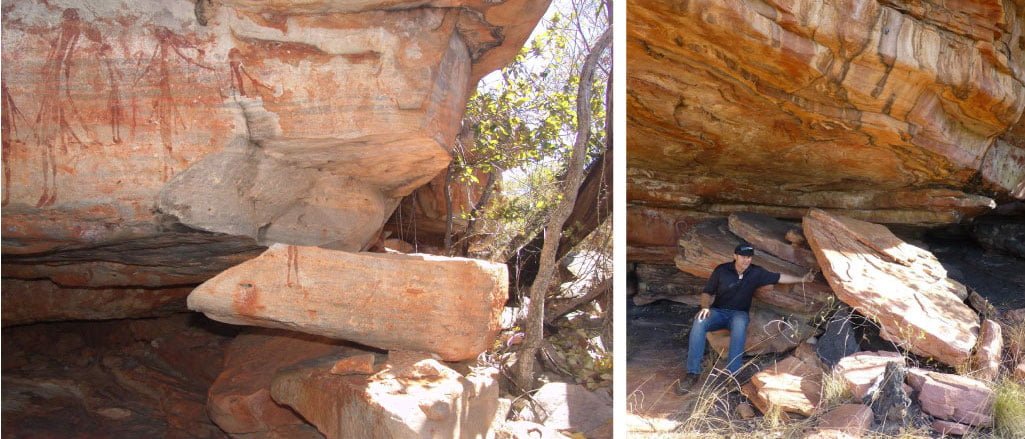"I want to congratulate the Australians for the breathtaking advances that are being made, and for the breadth, depth and innovation of the work you are doing. What is happening in rock art research in the Kimberley is simply astonishing. It is one of the most impressive research teams I have seen assembled anywhere in the world. Australia is leading the world in rock art research."
Renowned Cambridge-based archeologist Prof Chris Chippendale
Optically Stimulated Luminescence (OSL)
Samples: Wasp Nests, Material: Quartz grains, Dating: Time since nest was built.
OSL dating is based on the principle that quartz grains accumulate electrons over time but when exposed to sunlight all of these electrons are expelled-resetting the clock. When a mud wasp carries a mud droplet to it’s nest on a rock art panel, quartz grains held in that droplet are bleached by the light, resetting the OSL clock. This grain is then buried within the nest and allowed to accumulate electrons again- if we measure how many electrons there is we know how long that nest has been there and that the painting underneath must be older.

Wasp gathering mud droplet (left) and building it’s nest on a rock art panel (right).
Uranium Series (U-series)
U-series is usually applied to calcite in limestone environments. The remarkable finding of the last 12 months has been that it can be applied to phosphate minerals in the exposed sandstone environments of the Kimberley- a world first. These minerals precipitate out from water which contains a certain level of Uranium but no Thorium. Over time the U decays to Th and by measuring the amount of each we can work out how long that mineral layer has been over the art surface-and that the painting must be older.
The mineral accretion is a mounted and polished piece that gives a cross-section through the detailed internal stratigraphy (layers). The overlaid scans are laser ablation trace element maps (the laser vaporises a bit of material in each layer and sends it to the mass spectrometer which analyses the concentration of certain elements)- in this case they are showing us where Uranium is focussed. ‘PPM’ on the scale stands for parts per million (so its a tiny amount). Yellow is high, scaling down to black at 0.

Layered mineral accretions collected from mineral fringe (left), Laser ablation trace element scans showing where the Uranium is focused (yellow) (right).
Cosmogenic Nuclides
Samples: Sandstone fragments, Material: Cosmogenic Nuclides, Dating: Time since slab fall.
Cosmic rays are constantly bombarding earth. The slabs shown in the examples below are protected from these cosmic rays until it falls and becomes exposed. Once exposed the absorption of these rays generates ‘cosmogenic isotopes’ that we can measure to tell us how long it has been exposed for. If there is art on that slab we know the art must be younger than the fall.

Fallen ceiling slab with art painted before the fall on the underside of the exposed rock.
Radiocarbon
Samples: Wasp Nests, Material: Organic Material, Dating: Time since organism died.
Mud wasps also furnish their nests with paralyzed spiders or caterpillars. When an organism is living it is constantly exchanging the radioactive isotope carbon 14 with the atmosphere. When that organism dies the exchange stops and the 14C starts to decay to the non-radioactive isotope, carbon 12. The radioactive decay occurs at a fixed rate so by measuring the ratios of the different carbon isotopes we can work out how long it has been since the organism died. That will tell us how old the carbon in the nest or beeswax is likely to be.

Beeswax figure (left), Modern nest over hand stencil motif (centre), nest stumps under pigment of motif (right).





